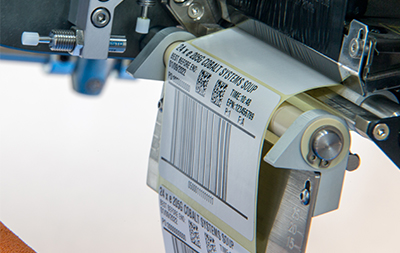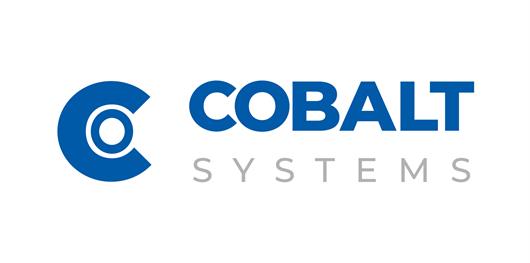 Add My Company
Add My Company
Coding vs Marking vs Labelling

Product information is essential for consumers to make informed decisions about what they purchase. It’s also vital for warehouse logistics, compliance with regulations, and making sure that the product is traceable throughout its life.
It’s the responsibility of manufacturers to provide accurate and concise information about the product. When it comes to getting that information onto the product or the packaging around it, there are multiple options to choose from, including labelling, coding, and marking.
Each method has advantages and disadvantages and choosing the best one can be a challenge. In this blog, we’ll explore the differences between labelling, coding, and marking, their benefits and drawbacks, and help you determine the best way to get information onto your products. Whether you’re a manufacturer, a retailer, or a consumer, this blog will provide insights on ensuring product information is clear, consistent, and easy to understand.
What is Coding?
Coding, in the context of product information, refers to the process of printing or engraving a unique set of characters, symbols, or numbers onto a product. The codes can be alphanumeric and may contain information such as the product’s manufacturing date, batch number, or expiry date.
Codes can be applied to the product using various methods, such as inkjet printing, laser engraving, or thermal transfer printing. Coding is often used in industries where products have a limited shelf life or require tracking throughout the supply chain. The codes provide a way to identify and track the product’s location and status, enabling manufacturers and sellers to manage their inventory and ensure product quality and safety.
What is Marking?
Marking refers to the process of adding information onto a product’s surface using techniques such as etching, engraving, embossing, or stamping. Unlike labelling or coding, marking involves creating a permanent or semi-permanent mark directly onto the product’s surface, such as metal, plastic, or wood. The information marked on the product can include brand name, logo, product name, model number, or other relevant information. Marking is often used in automotive, aerospace, and electronics industries, where products require identification and traceability throughout their lifecycle. In addition, marking provides a durable and tamper-proof way to add product information to the product itself, ensuring it remains visible and legible over time.
What is Labelling?
Labelling involves printing the necessary product information onto a label and then applying the label to the product or packaging. Labelling is a flexible process, with each label specific to the product that comes through, and with print-and-apply machines able to change the information that is put onto the label easily.
Labelling is ideal for quick-moving packaging lines which require much faster processes to keep up with production, offering speed, efficiency, and security for manufacturers.
Marking vs Coding
Both coding and marking use similar processes to get information onto a product: coding is a versatile and efficient way, especially when space is limited or traceability and security are essential considerations; however, there are several advantages when it comes to coding over marking when it comes to getting information onto a product:
- Space-saving: Codes can be printed or engraved onto small areas of a product, making them an ideal solution when space is limited, such as on small electronic devices or pharmaceuticals.
- Automation: Coding can be easily automated, allowing for fast and efficient application of information onto products. This can be especially useful for high-volume manufacturing processes.
- Traceability: Codes can track a product’s journey throughout the supply chain, from manufacturing to distribution to retail. This can help manufacturers and sellers ensure product quality and safety and quickly identify and address any issues.
- Security: Codes can be used to prevent counterfeiting and ensure product authenticity, as unique codes can be assigned to each product or batch.
When it comes to marking over coding, there are several benefits to keep in mind, however, such as:
- Customisation: Marks can be customised to include logos, brand names, and other design elements, providing a unique and personalised look to the product.
- Accessibility: Marks can be raised or embossed, making them accessible to visually impaired or blind consumers who rely on touch to read information.
- Durability: Marks are often permanent or semi-permanent, making them highly durable and resistant to wear and tear. This ensures the information remains legible throughout the product’s lifespan, even under harsh conditions.
- Tamper-proofing: Marks are difficult to remove or alter, making them an ideal solution for products that require traceability and security, such as automotive or aerospace components.
The Advantages of Labelling
Labelling has several advantages over both marking and coding – processes which require embossing or engraving information. When it comes to getting the right information onto products quickly, labelling offers:
- Flexibility: Labelling provides flexibility regarding the amount of information that can be conveyed to consumers. Labels can be of different sizes, shapes, and colours. In addition, they can contain various product information, such as ingredients, warnings, instructions, and marketing messages.
- Visibility: Labels are often placed on the outside of the product packaging, making them highly visible to consumers. This can help attract attention and communicate important information about the product.
- Readability: Labels are often printed in larger font sizes and high-contrast colours, making them easier to read than codes. This is especially important for consumers with visual impairments or limited literacy skills.
- Customisation: Labels can be customised for different product lines, markets, and languages, allowing manufacturers and sellers to tailor their message to specific audiences.
- Cost-effectiveness: Labelling is generally less expensive than coding, as it does not require specialised equipment or materials.
- Barcode quality: Labels can produce high quality barcodes that meet the required industry ISO 15415/15416 standards for readability in the manufacturing and logistics process.
Labelling is a versatile and cost-effective way to provide consumers with important information about the product while allowing for customisation and visibility. The speed and cost-effectiveness of the labelling process – as well as its versatility for dealing with products as wide-ranging as packs of deodorant cans to oil drums – makes the process one of the best for getting the right information onto products efficiently.
For more information about Cobalt’s range of print-and-apply machines to ensure that your packaging line is equipped with the best in labelling technology, get in touch with our experts.
For more information on Coding vs Marking vs Labelling talk to Cobalt Systems Limited

